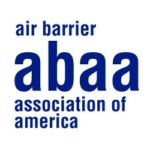
- This event has passed.
Unforeseen Impacts of Building Modifications to Roofing Assemblies
May 11, 2023 @ 1:00 PM - 2:00 PM EDT
This presentation involves case studies involving renovations, additions, and changes of use to buildings which resulted in roofing failures. Our primary case study involves an industrial building that was constructed in the early 2000s with a low sloped, mechanically-fastened, single-ply membrane roofing system, with parapet walls that transition to mansard roofs with standing-seam metal panels. An expansion to the building added a pitched roof along the interface that penetrated an existing parapet wall and mansard roof assembly. Additionally, changes to the operation of the building were made that required a regulated internal humidity level of 45% (relative humidity) with a frequent air exchange rate. Within 4 years post construction, the roofing membrane was noted to be billowing and sections of the membrane had become unbonded from the parapet wall. Further investigation revealed mechanical roof connectors were severely corroded and failing throughout with significant moisture present indicating a large-scale issue. Analysis of the building was performed which identified significant hygrothermal issues. The findings of this investigation initiated a complex design and repair to the existing building. Two additional case studies will demonstrate how interior renovations and changes of use and occupancy can negatively affect a roofing assembly, and how risk can be minimized with proper design solutions.
Learning Objectives:
- Diagnosing how modifications to the building envelope can affect the overall structure, integrity and soundness of a building.
- The importance of recognizing during design how an exterior envelope system will perform after a building’s use and/or occupancy will be altered during a renovation or addition project.
- Why continuous air and vapor control layers within roofing and wall assemblies are necessary to protect their various components, increase the lifespan of the assemblies, and benefit the overall well-being of a building’s users.
- Selecting proper roofing membrane, vapor barrier, and insulation components as part of a roofing assembly, and the importance of transition details from the roof to the wall to maintain the continuity of these barrier systems for protecting the building from both water infiltration and vapor drive.
 Michael Schulz, AIA
Michael Schulz, AIA
Michael Schulz is a licensed architect with 24 years of experience who has worked on a diverse spectrum of projects, from corporate interiors to buildings to bridges. Michael joined Martin/Martin’s Investigative Group in 2012 to focus on the design, repairs, and rehabilitation of building envelope systems. He has led multiple projects involving waterproofing repairs, façade re-cladding, and re-roofing designs in response to failure investigations, and applies the knowledge gained from these experiences to consult with designers on their new construction projects by performing peer reviews, hygrothermal analysis, and design-assist services. Michael also has experience performing infrared thermography, providing third-party quality assurance testing, and serving as an expert witness for construction defect claims.
